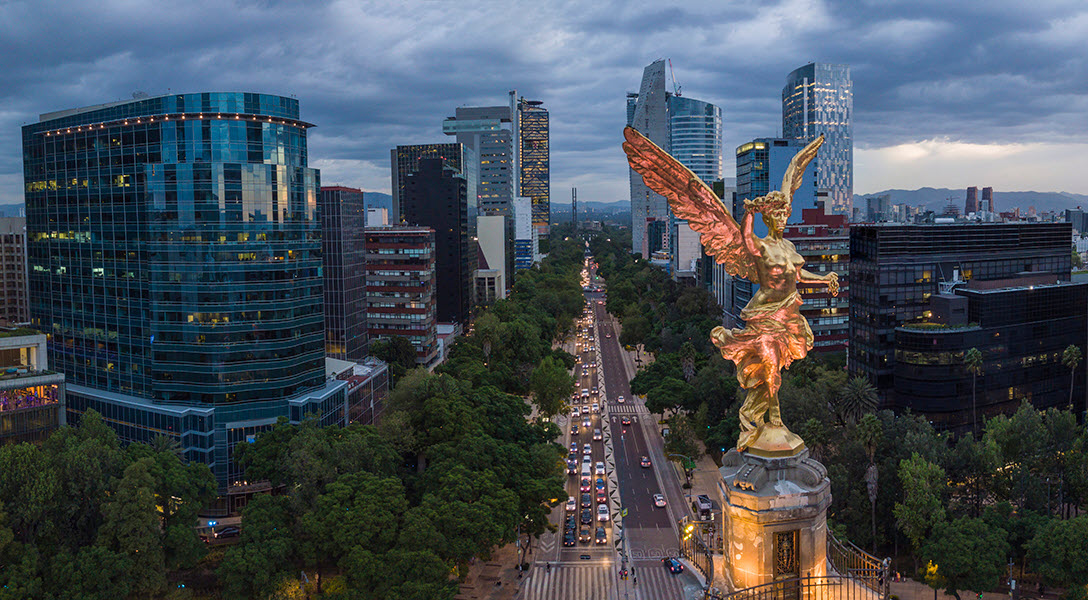
Mexico’s economy continues growing through second quarter, outlook remains weak
| August 2025 economic report | |||
| GDP, real Q2 '25 |
Employment, formal August '25 |
CPI August '25 |
Peso/dollar August '25 |
| 2.6% q/q | -22,300 jobs m/m | 3.6% y/y | 18.71 |
Mexico’s GDP exhibited solid growth in the first half of the year, expanding at an annualized 1.8 percent. As a result, the consensus forecast for 2025 real GDP growth (fourth quarter, year over year) compiled by Banco de México was 0.9 percent in September, up slightly from 0.7 percent in August (Table 1). The latest data available were mixed. While output, exports and retail sales grew, industrial production and employment declined. The peso was stable against the dollar, and inflation remained elevated.
| Table 1 Consensus forecasts for 2025 Mexico growth, inflation and exchange rate |
|||
| August | September | ||
| Real GDP growth in Q4, year over year | 0.7 | 0.9 | |
| Real GDP growth in 2025 | 0.4 | 0.5 | |
| CPI December 2025, year over year | 4.0 | 3.9 | |
| Peso/dollar exchange rate at end of year | 19.50 | 19.01 | |
| NOTES: CPI refers to the consumer price index. The survey period was September 15-29.
SOURCE: Encuesta sobre las Expectativas de los Especialistas en Economía del Sector Privado: Septiembre de 2025 (communiqué on economic expectations, Banco de México, September 2025). |
|||
Output increases slightly
The global economic activity index (IGAE), a monthly proxy for GDP growth, ticked up 0.1 percent in August after falling 0.5 percent in July (Chart 1). The goods-producing sector (including manufacturing, construction and utilities) was flat while the service-related activities (including trade and transportation) ticked up 0.1 percent. The IGAE rose 0.2 percent year over year.
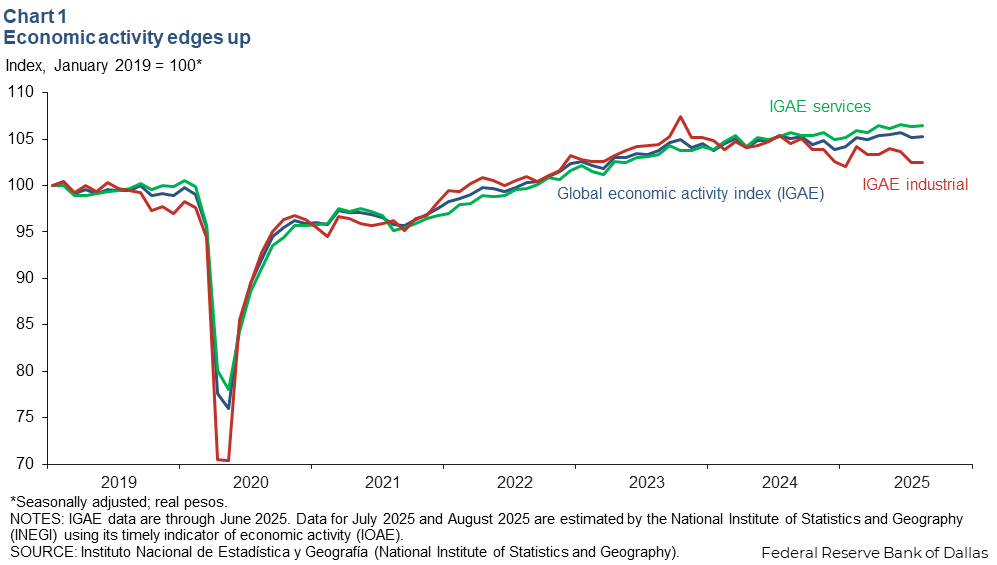
Industrial production falls in July
The three-month moving average of Mexico’s industrial production (IP) index, which includes manufacturing, construction, oil and gas extraction and utilities, edged down in July. Total IP decreased 0.3 percent while manufacturing IP fell 0.5 percent (Chart 2). North of the border, the three-month moving average of U.S. IP ticked up 0.1 percent in August. With the rise of intra-industry trade between the U.S. and Mexico since the early 1990s, the correlation between Mexican and U.S. IP has increased considerably.
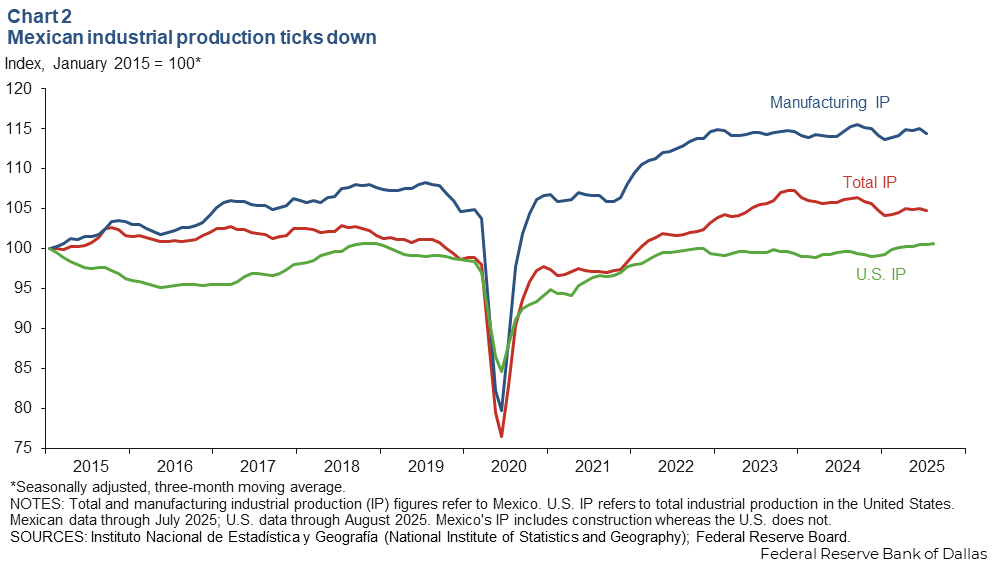
Total exports grow
The three-month moving average of Mexico’s total exports grew 1.6 percent in August (Chart 3). The manufacturing sector, which accounts for most exports, increased 2.0 percent, while oil exports further decreased 5.9 percent. On a year-over-year basis, the smoothed total exports index rose 4.4 percent, while manufacturing exports increased 6.3 percent, and oil exports fell 27.4 percent.
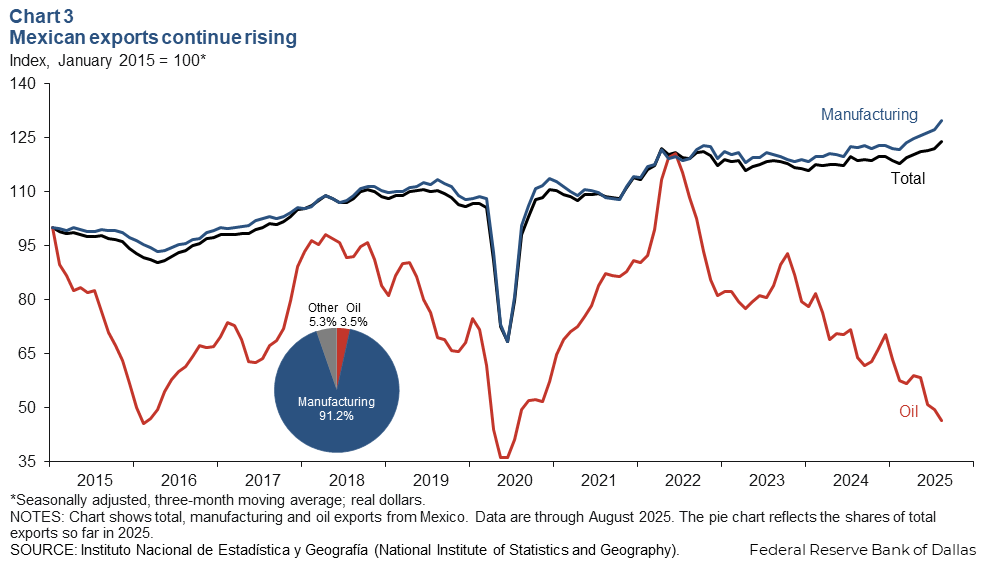
Retail sales tick up
The three-month moving average of real retail sales edged up 0.4 percent in July and was up 2.5 percent year over year (Chart 4).
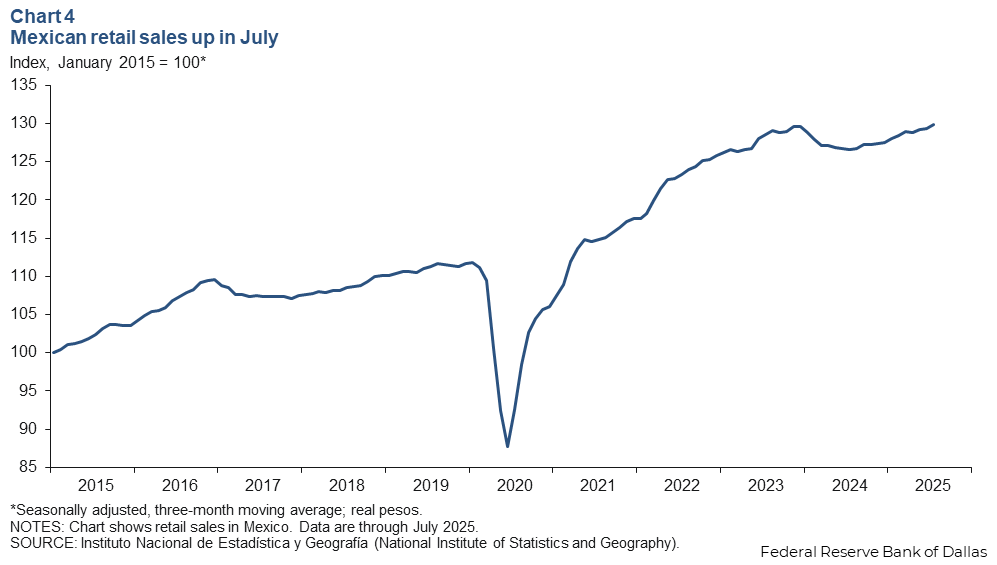
Employment falls in August
Formal employment (jobs with government benefits and pensions) fell an annualized 1.4 percent (-22,300 jobs) in August after growing 0.2 percent in July (Chart 5). Compared to a year ago, employment has grown a mere 0.8 percent. The unemployment rate, which tracks only the formal sector, remained unchanged at 2.6 percent in July.
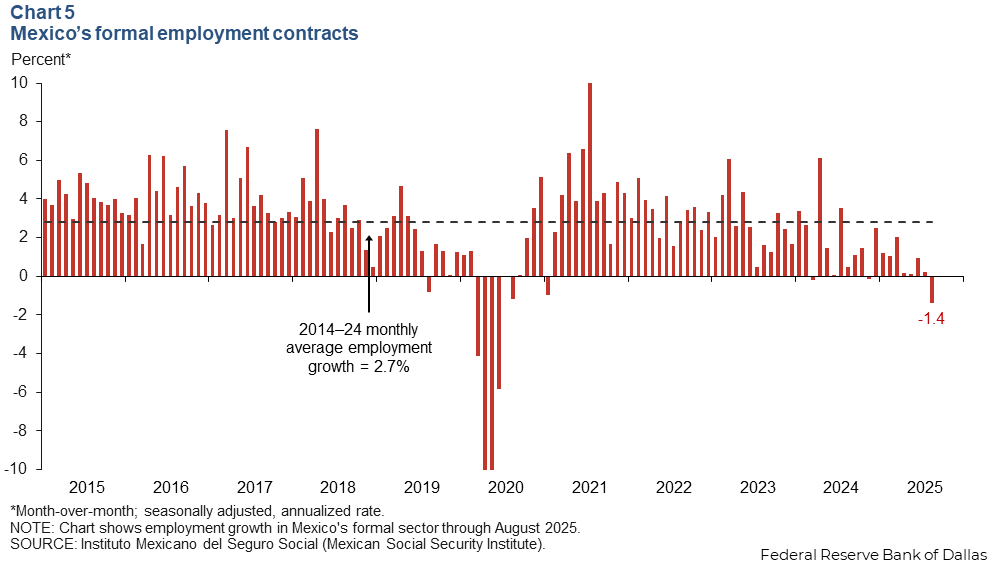
Exchange rate unchanged
The Mexican currency averaged 18.7 pesos per dollar in July and August (Chart 6). The peso has been edging up against the dollar since the start of 2025 as the currency has been a top candidate for carry trade due to Mexico’s higher interest rates relative to the U.S. and other developed economies. Institutional funds and traders place portfolio positions on the peso by borrowing dollars and buying pesos. Investors use the interest rate differential to profit, which creates high demand for the currency.
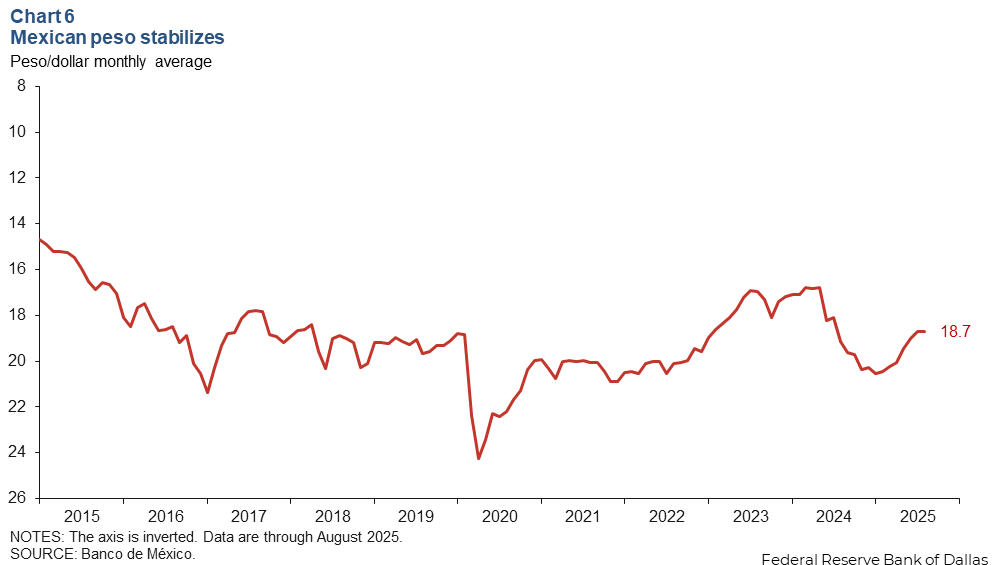
Remittances grow slightly in July
The three-month moving average of real remittances to Mexico increased 0.5 percent in July after falling 1.7 percent in June (Chart 7). Compared to July 2024, remittances have declined 11.1 percent. The exchange rate plays a role in the volume of remittances because it determines the cost to the sender and the amount the recipient receives. For example, if the peso appreciates against the dollar, the recipient will receive fewer pesos for a given number of dollars.
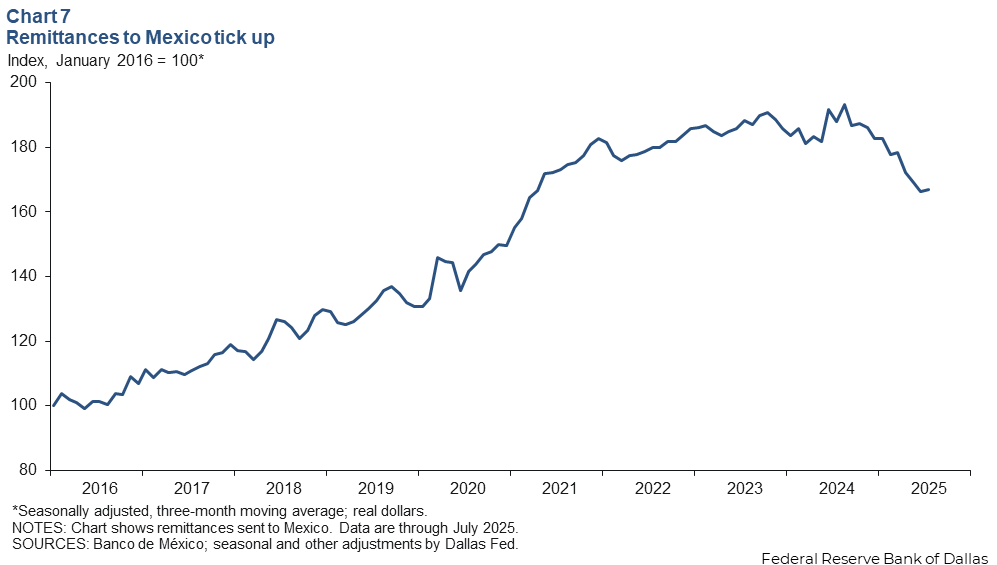
Inflation stabilizes at elevated levels
Mexico’s consumer price index (CPI) grew 3.6 percent in August over the prior 12 months from 3.5 percent in July (Chart 8). Core CPI inflation, which excludes food and energy, grew 4.2 percent over the same time period, similar to the previous month. Meanwhile, services inflation grew 4.4 percent. In September, Mexico’s central bank lowered its benchmark rate by 25 basis points to 7.50 percent, in line with market expectations. The central bank expects to reach its 3.0 percent inflation target by third quarter 2026.
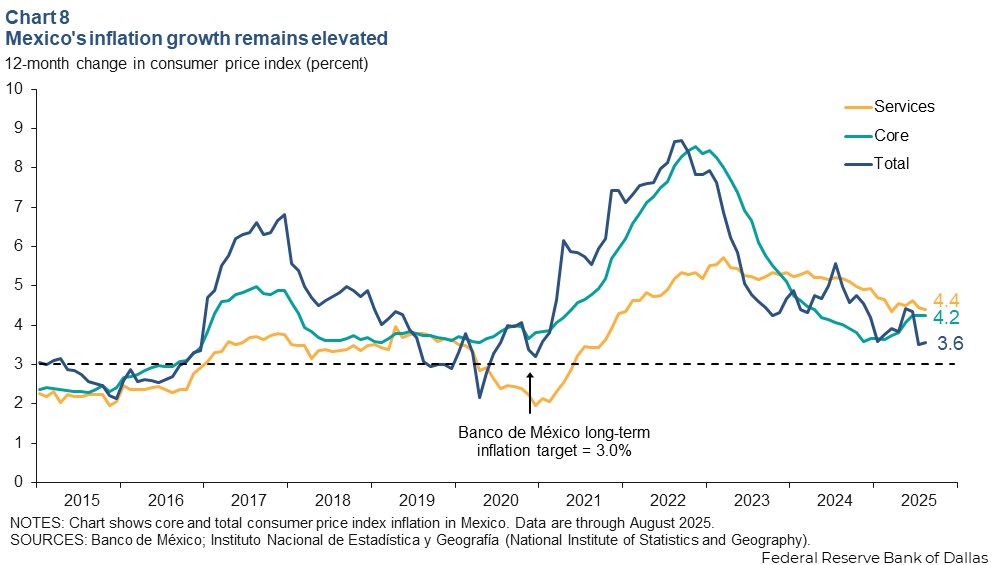
About the authors


